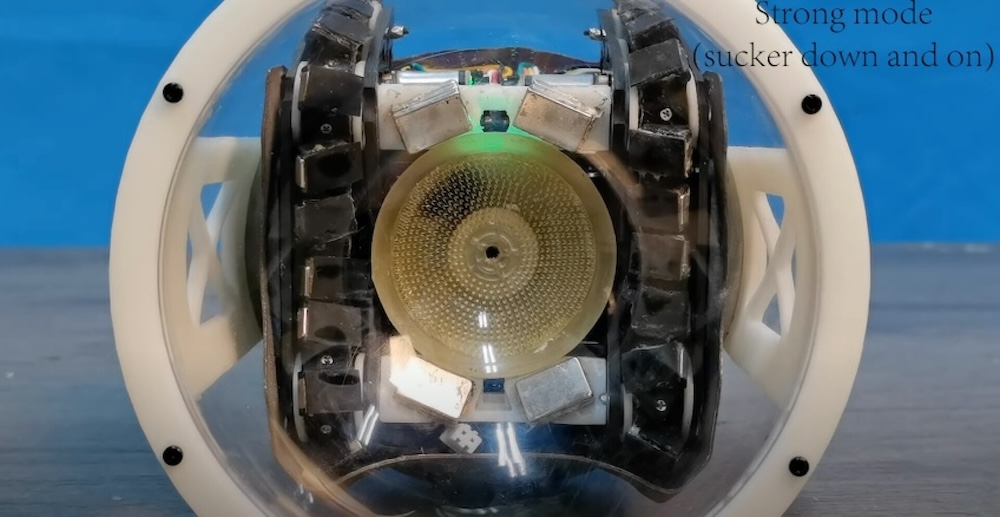Researchers have built a swarm of miniature, snail-inspired robots, minus all the mucus. Instead, a retractable suction cup works in tandem with the remote-controlled machine’s tank-like treads to maneuver across both difficult terrain and over each other.
Biomimicry is nothing new within the field of robotics. But while many aquatic and flying examples can navigate three-dimensional environments, that often isn’t the case for bots relegated to walking, crawling, or rolling along the ground. Determined to find a potential solution, roboticists at the Chinese University of Hong Kong looked to shelled gastropods for their design cues.

The result, detailed recently in Nature Communications, is a troop of snailbots that can collaborate when an environment becomes too difficult for a single explorer. Each rubber tread system incorporates tiny magnets, above which the electronics, battery, microprocessor, and other components are housed within a bespoke metal “helmet.” When in “free mode,” the robots move across a surface much like a traditional tank or bulldozer. But when the going gets tough and it’s time to swap responsibilities, the team engages their snail bot’s “strong mode.”
[Related: Why animals run faster than their robot doppelgängers… for now ]
Thanks to the angle of each machine’s magnetic tread chain, every snail bot can scale a fellow swarm mate’s metal shell. Once in place, a human controller enables “strong mode” to deploy the top bot’s vacuum-suction cup onto the shell underneath it. This anchors the robot, allowing the overall bot team to repeat as needed. As an added benefit, the robots can pivot 360-degrees while the suction cup remains adhered. In trial runs, the machines successfully created staircases to clear ledges, constructed bridges to cross gaps similar to army ants, and even formed a single, elongated robot arm.

“The emphasis on the single robot’s field mobility ensures the overall system’s flexibility and agility,” the team explained in their paper. “Furthermore, the incorporation of a robust connection mechanism becomes pivotal, ensuring that when the robot swarm assembles into a cohesive unit, it attains heightened robustness.”
[Related: Boston Dynamics gives Spot bot a furry makeover.]
Researchers believe their new design’s underlying principles could be utilized to deploy similar bots in real-world situations such as search-and-rescue missions and other potentially dangerous environments. There may even be a time when we see space snailbots explore asteroids, moons, or other planets. Before that, however, designers intend to develop new iterations that are fully autonomous, allowing them to communicate, plan, and construct with one another.

